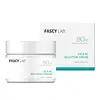What's inside
What's inside
 Key Ingredients
Key Ingredients

 Benefits
Benefits

 Ingredients Side-by-side
Ingredients Side-by-side

Water
Skin ConditioningButylene Glycol
HumectantGlycerin
HumectantGluconolactone
Skin ConditioningSodium Hyaluronate
HumectantNelumbo Nucifera Leaf Extract
Skin ConditioningZanthoxylum Piperitum Fruit Extract
Skin ConditioningEucalyptus Globulus Leaf Extract
PerfumingHoney Extract
HumectantAcrylates/C10-30 Alkyl Acrylate Crosspolymer
Emulsion StabilisingAsiaticoside
AntioxidantAllantoin
Skin ConditioningAdenosine
Skin ConditioningCarbomer
Emulsion StabilisingArginine
Masking1,2-Hexanediol
Skin ConditioningEthylhexylglycerin
Skin ConditioningCaprylyl Glycol
EmollientWater, Butylene Glycol, Glycerin, Gluconolactone, Sodium Hyaluronate, Nelumbo Nucifera Leaf Extract, Zanthoxylum Piperitum Fruit Extract, Eucalyptus Globulus Leaf Extract, Honey Extract, Acrylates/C10-30 Alkyl Acrylate Crosspolymer, Asiaticoside, Allantoin, Adenosine, Carbomer, Arginine, 1,2-Hexanediol, Ethylhexylglycerin, Caprylyl Glycol
Water
Skin ConditioningGlycerin
HumectantButylene Glycol
HumectantPentylene Glycol
Skin ConditioningSqualane
EmollientCetyl Alcohol
EmollientBetaine
HumectantDimethicone
EmollientArginine
MaskingCetyl Phosphate
EmulsifyingBatyl Alcohol
EmollientSucrose
HumectantPhenoxyethanol
PreservativeCarbomer
Emulsion StabilisingMethyl Gluceth-20
HumectantAcrylates/C10-30 Alkyl Acrylate Crosspolymer
Emulsion StabilisingEthylhexylglycerin
Skin ConditioningDisodium EDTA
Biosaccharide Gum-1
HumectantSodium Hyaluronate
HumectantSynurus Palmatopinnatifidus Leaf/Stem Extract
HumectantMadecassoside
AntioxidantAsiaticoside
AntioxidantAsiatic Acid
Skin ConditioningMadecassic Acid
Skin ConditioningWater, Glycerin, Butylene Glycol, Pentylene Glycol, Squalane, Cetyl Alcohol, Betaine, Dimethicone, Arginine, Cetyl Phosphate, Batyl Alcohol, Sucrose, Phenoxyethanol, Carbomer, Methyl Gluceth-20, Acrylates/C10-30 Alkyl Acrylate Crosspolymer, Ethylhexylglycerin, Disodium EDTA, Biosaccharide Gum-1, Sodium Hyaluronate, Synurus Palmatopinnatifidus Leaf/Stem Extract, Madecassoside, Asiaticoside, Asiatic Acid, Madecassic Acid
Ingredients Explained
These ingredients are found in both products.
Ingredients higher up in an ingredient list are typically present in a larger amount.
Acrylates/C10-30 Alkyl Acrylate Crosspolymer is a synthetic polymer. It is used to thicken and improve the texture of products. Due to its properties, it can prevent water and oil ingredients from separating.
Arginine is an amino acid that is important for human development. Your body uses is it to produce hair keratin and skin collagen.
As a cosmetic ingredient, Arginine has antioxidant properties and can also help repair damaged skin. This ingredient is derived either synthetically or from animals.
Arginine isn't fungal acne safe when used in the presence of other lipids (fats, fatty acids, oils, esters, etc). Oils and fats occur naturally within the skin, so take caution when using Arginine if you're prone to fungal acne.
Learn more about ArginineAsiaticoside comes from the super popular skin-soothing ingredient, Centella asiatica. It is one of four active compounds found in the extract of Centella Asiatica.
Asiaticoside is an antioxidant and helps with wound healing. It has been shown to increase antioxidant activity during the wound healing process.
Butylene Glycol (or BG) is used within cosmetic products for a few different reasons:
Overall, Butylene Glycol is a safe and well-rounded ingredient that works well with other ingredients.
Though this ingredient works well with most skin types, some people with sensitive skin may experience a reaction such as allergic rashes, closed comedones, or itchiness.
Learn more about Butylene GlycolCarbomer is a polymer of acrylic acid. Its main role is to create a gel consistency.
A high amount of carbomer can cause pilling or balling up of products. Don't worry, most products contain 1% or less of carbomer.
Ethylhexylglycerin (we can't pronounce this either) is commonly used as a preservative and skin softener. It is derived from glyceryl.
You might see Ethylhexylglycerin often paired with other preservatives such as phenoxyethanol. Ethylhexylglycerin has been found to increase the effectiveness of these other preservatives.
Glycerin is already naturally found in your skin. It helps moisturize and protect your skin.
A study from 2016 found glycerin to be more effective as a humectant than AHAs and hyaluronic acid.
As a humectant, it helps the skin stay hydrated by pulling moisture to your skin. The low molecular weight of glycerin allows it to pull moisture into the deeper layers of your skin.
Hydrated skin improves your skin barrier; Your skin barrier helps protect against irritants and bacteria.
Glycerin has also been found to have antimicrobial and antiviral properties. Due to these properties, glycerin is often used in wound and burn treatments.
In cosmetics, glycerin is usually derived from plants such as soybean or palm. However, it can also be sourced from animals, such as tallow or animal fat.
This ingredient is organic, colorless, odorless, and non-toxic.
Glycerin is the name for this ingredient in American English. British English uses Glycerol/Glycerine.
Learn more about GlycerinSodium Hyaluronate is hyaluronic acid's salt form. It is commonly derived from the sodium salt of hyaluronic acid.
Like hyaluronic acid, it is great at holding water and acts as a humectant. This makes it a great skin hydrating ingredient.
Sodium Hyaluronate is naturally occurring in our bodies and is mostly found in eye fluid and joints.
These are some other common types of Hyaluronic Acid:
Learn more about Sodium HyaluronateWater. It's the most common cosmetic ingredient of all. You'll usually see it at the top of ingredient lists, meaning that it makes up the largest part of the product.
So why is it so popular? Water most often acts as a solvent - this means that it helps dissolve other ingredients into the formulation.
You'll also recognize water as that liquid we all need to stay alive. If you see this, drink a glass of water. Stay hydrated!
Learn more about Water